
LAGOON 450
Owner's Manual
www.cata-lagoon.com


We share a common passion for the sea: we, LAGOON as shipbuil-
ders and you who want to live your passion on the Seven Seas.
We are delighted to welcome you to the great family of LAGOON boat
owners and we congratulate you on it.
This manual was meant to help you to enjoy your boat comfortably
and safely. It includes the boat specifications, the equipment provided
or installed, the systems and tips on her operation and maintenance.
Read this manual carefully before you put out to sea so that you can
make the most of her and avoid any damage and any trouble. Get to
know your boat before you sail.
We keep improving our boats as we want you to benefit from the tech-
nological developments, new equipment or materials and our own ex-
perience. That is the reason why the specifications and information
given are not contractual, they may be modified without prior notice or
up dates.
This instruction guide has a general purpose and it may mention some
equipment or accessories or deal with some points or questions that
are not relevant to your own boat ; if in doubt, refer to the inventory
that you received on delivery of your boat.
If this is your first boat or if you change to a new type of boat which
you are not used to, get some training in boat control and sailing to en-
sure your safety and comfort. Your dealer, your international sailing
association or your yacht club will be very happy to recommend local
sailing schools or professional instructors.
Even if everything has been provided for and designed for the safety
of the boat and the safety of her users, don't forget that sailing highly
depends on the weather conditions, the sea condition, and that only
an experienced and very fit crew, handling a well-maintained boat can
sail satisfactorily.
The sea and wind conditions that correspond to the design
categories A,B or C are changeable and are dependent on the ha-
zards of unusually strong waves or gusty winds. Therefore total safety
cannot be guaranteed, even if your boat meets the requirements of a
category.
Our network of LAGOON authorized dealers will be at your dis-
posal to help you get acquainted with your boat and will be the
most qualified to take care of her maintenance.
Always listen to the weather forecast before you put out to sea.
Make sure the sea and wind conditions will correspond to the
category of your boat and you and your crew are able to han-
dle the boat in these conditions.

The sea and the water are not the natural environment of Man and one
has to respect their laws and strength.
Adapt the use of your boat to her condition that wears out with time
and use.
Any boat, however solid she may be, may be severely damaged if ba-
dly used. This is not compatible with a secure navigation. Always
adapt the speed and direction of your boat to the conditions of the sea.
The 'COLREG', an international regulation in order to prevent collision
at sea, published by the International Maritime Organization, specifies
the steering and course regulations, the navigation lights etc. throu-
ghout the world Make sure you know these regulations and you have
on board a manual that explains them.
In numerous countries, a licence, an authorization or a training course
is requested.
Make sure you have this legal authorization before you use your boat.
Always use an experienced technician for the maintenance of your
boat, the fitting of accessories and the carrying out of small modifica-
tions. The written authorization of the builder or his legal representati-
ve is compulsory for modifications that alter the specifications of the
boat, in particular the vertical layout of the grounds (putting up of a ra-
dar, modification of the mast, change of the engine etc.).
The users of the boat are informed of the following:
- The entire crew must be trained properly.
- The boat shall not be loaded more with than the maximum load re-
commended by the builder, in particular the total weight of the food
supplies, of the different equipment that are not supplied by the buil-
der and of the persons on board. The weight of the boat shall be pro-
perly distributed.
- The water in the bilge shall be kept at its minimum.
- The stability is reduced when you add weight in the upper parts.
- In case of heavy weather, the hatches, lockers and doors shall be
closed in order to minimize the risk of water coming in.
- The stability may be reduced when you tow a boat or when you lift
heavy weights with the davits or the boom.
- Breakers are serious dangers to stability.
- In the boat there shall be all the proper safety equipment (harness,
flares, liferaft etc.) depending on the type of boat, the country, the
weather
- The crew must be familiar with the use of all the safety equipment
and the emergency safety procedures (MOB, towing etc.).
- Anyone on the deck shall wear a life jacket or a buoyancy aid. Please
note that in some countries it is compulsory to wear an homologated
buoyancy aid permanently.
For the essential or optional equipment (engine, electronics
etc.) refer to their respective manual delivered with your boat.
Keep this manual in a safe place and hand it over to the new
owner if you sell your boat.

CONTENTS
UPDATE 01/2011 - INDEX A
3
Chapter Page
Using your boat
Construction and equipment
1 Navigation................................................................................................................................ 5
2 Winter Storage....................................................................................................................... 23
3 Launching .............................................................................................................................. 27
4 Hull & Deck ............................................................................................................................ 35
5 Interior.................................................................................................................................... 45
6 Electricity ............................................................................................................................... 55
7 Plumbing................................................................................................................................ 69
8 Engine .................................................................................................................................... 81
9 Rigging and Sails .................................................................................................................. 97
10 Safety ................................................................................................................................... 113
11 General specifications........................................................................................................127
Notes


5
GETTING UNDER WAY ................................................. 7
VISIBILITY IN NAVIGATION .......................................... 7
NAVIGATION UNDER MOTOR ....................................... 9
NAVIGATION UNDER SAIL ......................................... 11
MOORING ................................................................... 17
TOWING ...................................................................... 17
ANCHORING ............................................................... 17
DAVIT (OPTIONAL) ..................................................... 21
ENVIRONMENT ........................................................... 21
Navigation 1

LAGOON 450
NAVIGATION
6
1. Battery switch of negative terminal - Port engine
2. Battery switch Positive - Port engine
3. Relay coupler
Lay out of: Port aft cabin
4. Battery switch - Common negative
5. Battery switch - Positive engine - To starboard
6. Battery switch - Service positive
Lay out of: Starboard aft cabin
1 - Switch - Saloon - Central.
2 - Switch - Saloon - Side.
3 - Switch - Night lamps.
LOCKING -
SLIDING DOOR
ENTRY SWITCHES
GETTING UNDER WAY

LAGOON 450
1
NAVIGATION
7
The sliding door locks in three different positions: closed, ajar (airing
position) and open.
A latch on the doorframe enables locking from inside the saloon.
Switch on the main power of the boat by activating the battery swit-
ches located in the port and starboard aft cabins,then activate the
different accessory switches on the electrical panel.
Check the charge rate of the batteries, the water level in the tanks
and the fuel level (see ELECTRICITY and MOTORIZATION chap-
ter).
Carry out the inventory of compulsory safety equipment and instruct
the crew concerning its location and operation.
The international regulations to prevent collision at sea (COLREG)
and the course regulations make mandatory a permanent and pro-
per surveillance and the respect of priority.
Make sure there is no other boat on your way.
The visibility from the steering station may be obstructed in the fol-
lowing conditions:
- Load and load distribution.
- Sea conditions, rain, spray, fog or darkness.
- Lights on inside the boat.
- Persons and removable equipments in the helmsman's field of vi-
sibility.
Getting under way
RECOMMENDATION
While sailing block the sliding door shut.
RECOMMENDATION
When entering the saloon be careful of the step leading
down into the port hull.
DANGER
Remember to disconnect the shore power supply before
casting off.
Visibility in navigation
NAVIGATION

LAGOON 450
NAVIGATION
8
FUEL VALVE
located directly on the tanks
FUEL VALVE

LAGOON 450
1
NAVIGATION
9
Before starting the engine:
- Ensure that the fuel valves are open.
- Open the valves for the engine cooling systems. (See "Motorisa-
tion" chapter).
To start the engines, refer to the manufacturer's manual too.
• ENGINE STARTER
Turn on the battery switches located in the port and starboard aft ca-
bins.
- Disengage the reverse gear (it will make the acceleration possible
when in neutral).
- Proceed in the following order:
After starting the engine check for cooling water running out of the
exhaust and observe the color of exhaust gases.
• BATTERY COUPLING
In the case of low engine battery power use the battery coupling
function by turning on the coupling handle located in the aft cabin.
Once the engines have been restarted make sure that the coupling
handle is turned back to its original position.
• NAVIGATION
When the engine is running, avoid making noise and chops near the
other users.
Respect speed limits.
Navigation under motor
WARNING
Never switch off or de-energize the electric system when the
engine is running.
NAVIGATION

LAGOON 450
NAVIGATION
10 CATAMARAN
Weight of vessel: 10 tons
d: distance between centre of buoyancy and cen-
tre of gravity
SINGLE-HULL
Weight of vessel: 10 tons
RMmax: Weight of vessel x d
(RMmax: Righting moment Maximum)
RMmax Single-hull: 10 tons x 0,5 metres
: 5 tons.metres
RMmax Catamaran: 10 tons x 3 metres
: 30 tons.metres
RIGHTING MOMENT
Illustration showing the difference between
the righting moments of a single-hull ves-
seland a catamaran of 10m length.

LAGOON 450
1
NAVIGATION
11
• BEWARE
A catamaran presents 6 times greater heel resistance than a single-
hull vessel. In terms of ship design we speak of righting moment
(multiplication of the vessel's weight by the transverse distance
between the centre of gravity and the centre of flotation (or buoyan-
cy)).
See illustration on previous page.
This fact has real consequences for the handling and sail-trimming
of a catamaran.
The fact that the boat will not heel over could conceal an excessive
sail surface area in use, which could be dangerous for the crew and
the vessel. It is therefore essential to constantly monitor the real
wind speed and to trim the sail surface area as a priority in accor-
dance with this speed.
These latter adjustments are valid in calm seas. In rough seas one
should take the precaution of reducing 10% earlier in terms of real
wind speed. Generally speaking, it is essential to constantly look to
relieve the vessel rather than to put it under stress.
One should always look for the sail angle of attack to be headed to
the apparent wind and the sails to be not over-trimmed so that the
airflows leaving the sail are parallel to each other, that is to say they
do not create turbulence behind the sail.
Failure to follow the above recommendations can be dangerous for
the boat and the crew, and the manufacturer cannot be held respon-
sible in the event of an accident.
• CLOSE HAULED TRIMMING (between 75 and 50° to true
wind)
Given wind force in apparent wind
- From 0 to 16 knots: full sail ; mainsail traveler 30 cm to windward
of center, mainsail trimmed with a slightly opened leech (boom
centered).
The Genoa jib is trimmed near the spreader,the Genoa traveler is
placed so that the angle of the Genoa sheet forms a straight line
with the clew and the luff, at 40% of its height.
- From 16 to 20 knots: full sail ; the mainsail traveler moves up to
60 cm to windward of center, mainsail trimmed with a slightly more
open leech (boom still in line: so the sheet will have to be slacke-
ned).
The Genoa traveler does not change position but adjust the sheet
so that the leech is 10 cm from the spreader.
- From 20 to 26 knots: 1 Reef, full Genoa ; the mainsail traveler co-
mes back to 30 cm to windward of center.
The Genoa traveler does not change position but adjust the sheet
so that the leech is 20 cm from the spreader.
- From 26 to 30 knots: 1 Reef, 75% of the Genoa ; the mainsail
traveler comes back to 60 cm to windward of center.
The Genoa traveler remains in place or moves slightly forward but
it is adjusted so that the leech forms a propeller, the upper part
dumping air out under strong gusts of wind.
- From 30 to 36 knots: 2 Reef, 60% of the Genoa ; the mainsail
traveler returns to the 30 cm to windward of center, the boom is
slackened to fly 50 cm leeward.
The Genoa traveler is moved slightly forward, the adjustment re-
mains the same.
Navigation under sail
NAVIGATION

LAGOON 450
NAVIGATION
12
CLASSICAL MAST
I. 17.89 m
J. 4.57 m
P. 17.65 m
E. 6.63 m
SAILS SURFACE
SAILS
CLASSICAL MAST
Batten mainsail - Classical: 79 m²
1 Reef: 63 m²
2 Reef: 47 m²
3 Reef: 30 m²
Large gaff sail: 81 m²
1 Reef: 65 m²
2 Reef: 49 m²
3 Reef: 31 m²
Furling genoa: 49 m²
Landmark 1: 39 m²
Landmark 2: 29 m²
Gennaker: 104 m²

LAGOON 450
1
NAVIGATION
13
- From 36 to 45 knots: 2 Reef, 40% of the Genoa. The mainsail
traveler is dead center and the boom veers 1 meter to leeward.
The Genoa traveler moves forward slightly, the sheet is slackened
to open wide in strong wind conditions.
- From 45 to 55 knots: 3 Reefs alone (either storm sail or lie to),
traveler in the center,mainsail out by 1 meter.
The boat will be more at ease scudding in this weather.
- Over 55 knots: lie to, drag anchor or, preferably, scud bare poles.
• CLOSED REACHED TRIMMING (between 75 and 130° to true
wind)
- From 0 to 23 knots: full sail ; the traveler is positioned between 1
meter from centre up to windward of center, depending on the
wind angle, the sheet is slackened so that boom is veering out any-
thing from 50 cm in calm weather to 2 meters when the wind is for-
cing.
In every case no more than one batten should be allowed to chafe
at the shroud at the fastest speeds.
The Genoa jib is slackened so that its average attack angle is head
on to the apparent wind.
- From 23 to 28 knots: 1 Reef, full Genoa. The adjustments are
identical.
- From 28 to 33 knots: 2 Reef, 80% of the Genoa. The adjustments
are identical.
- From 33 to 38 knots: 2 Reef, 60% of the Genoa. The adjustments
are identical.
- From 38 to 45 knots: 3 Reef (or mainsail lowered and a little more
Genoa), 40% of the Genoa. The adjustments are identical.
- From 45 to 55 knots: mainsail lowered, 40 to 30% of the Genoa,
sufficiently trimmed so as not to flap.
- Over 55 knots: scudding,depending on the sea conditions the
mooring lines can be looped round behind the vessel and attached
on the opposite side to act as a brake.
These indications are given for your information only and are de-
pendant on outside conditions.
WARNING
Your boat is designed to sail without the need to climb onto
the roof for any maneuvers.
It is dangerous to climb or stay on the roof particularly in the
event of gibing.
Keep children under close supervision.
NAVIGATION

LAGOON 450
NAVIGATION
14 1. System - Mast foot
2. Genoa sheets
3. System - Mainsail (classic)
4. System - Genoa furler
5. Work area
6. Arm + Spinnaker sheet
See Chapter Fittings - Rigging, for details
1
3
2
4
6
5
SYSTEM COMMON - OVERVIEW

LAGOON 450
1
NAVIGATION
15
• REDUCING SAIL
The boat is fitted with 3 reefs.
Reefs n°1 and n°2 are automatic, n°3 is traditional.
The luff eyelet of reef n°3 is fitted with a strap with a snap shackle
to clip on to the eye bolt on the boom.
Putting in reefs n°1 and n°2:
1 - Head the boat into the wind.
2 - Pull tight the topping lift.
3 - Slacken the mainsail sheet.
4 - Slacken the mainsail halyard and then trim reef line n°1 or n°2,
as needed, until the reefing blocks which correspond to the luff
and the mainsail leech are a few centimeters from the boom.
5 - Close the line cam cleat of the respective reef.
6 - Hoist taut the mainsail halyard.
7 - Slacken the topping lift and take in the mainsail sheet.
Follow the lowering and raising of the sail with the help of the head
downhaul.
Putting in reef n°3:
Repeat steps 1 to 3 as before, then:
4- Slacken the mainsail halyard then trim reef line n°3 until the main-
sail leech block is a few centimeters away from the boom.
- Clip the snap shackle on the luff eyelet of reef n°3 onto the eye bolt
located on the boom.
- Take up the slack in the lines of reefs n°1 and 2.
- Repeat steps 5 to 7 as before.
Refer to the running rigging diagram (chapter on RIGGING AND
SAILS) for identification of ropes.
• NAVIGATION WIND ASTERN
- Do not fall off more than 150° to the apparent wind.
- Put the traveler out as far as possible and slacken the sheet slight-
ly.
- Make sure the mainsail does not touch the shrouds ; the rubbing
of the battens will wear the material and cable very rapidly.
- Keep mainsail + solent up to 15 knots speed and put in one reef or
more if the accelerations are sudden and strong or if sea condi-
tions deteriorate.
RECOMMENDATION
For safety, the reef line used should always stay on the
winch with 3 turns around the drum.
Re-close the cam cleat for greater safety.
NAVIGATION

LAGOON 450
NAVIGATION
16
1 - Midship cleat for towing. 3 - Swimming ladder.
5 - Outboard engine bracket (not supplied). The maximum
weight of the outboard engine (not supplied) on the pus-
hpits should not exceed 20 kg.
2 - Mooring cleats. 4 - Ring lifebuoy bracket + Support flag.
DECK LAYOUT

LAGOON 450
1
NAVIGATION
17
A sufficient number of mooring lines suitably sized and suitable for
the environment shall be on board for mooring your boat.
- Always manoeuvre your boat using the engine.
- Make allowance for the current and wind when you handle your
boat.
- Protect your boat to the highest degree with suitably sized fenders.
- Always keep the mooring ropes unfouled and stored away.
- Handle your boat at a reduced speed.
AFTER MOORING
- Protect the mooring lines against chafing with plastic sleeves.
- Make allowance for the variations in tides if need be.
TOWING BOAT
- Tow another boat at a reduced speed and as smoothly as you can.
- Pay particular attention when you throw or catch the towing rope
(it may foul on the propeller).
NOTE: The stability may be reduced when you tow a boat.
TOWED BOAT
- Keep steering your boat and see to it that you stay in the wake of
the towing boat.
As a rule, set the anchor in at least 3 times the depth of water.
• PREPARATION OF ANCHORING (Illustrations following page)
- Install the bridle by fixing it to the chain plates located at the ends
of the fore beam.
- Put the bridle through the stem bow roller.
- Shackle the bridle to the central cleat during the lowering of the
chain.
• MANUAL ANCHORING
- Have your boat pointed into the wind and without speed.
- Release the brake on the chain lifter.
- Pay out the chain while moving back slowly.
- Secure the anchor chain on the bridle.
- Lead out the chain until the guy becomes taut.
Mooring
DANGER
Don't try to stop the boat with your foot, your hand or a boat
hook.
Towing
Anchoring
RECOMMENDATION
Before anchoring check the depth of water, the power of the
current and the nature of the sea bed.
NAVIGATION

LAGOON 450
NAVIGATION
18 OPERATION RELAY
Lay out of: Compartment - Generator
(Starboard forward)
1 - Anchor
2 - Bow fitting
3 - Cleat
4 - Handle position
5 - Drum head
6 - Chain lifter 12mm diameter
7 - Remote control
8 - Handle storage
9 - Clench
9 - Clench
WINDLASS CIRCUIT BREAKER - 125A
(STARBOARD AFT CABIN)
ANCHORING
Page is loading ...
Page is loading ...
Page is loading ...
Page is loading ...
Page is loading ...
Page is loading ...
Page is loading ...
Page is loading ...
Page is loading ...
Page is loading ...
Page is loading ...
Page is loading ...
Page is loading ...
Page is loading ...
Page is loading ...
Page is loading ...
Page is loading ...
Page is loading ...
Page is loading ...
Page is loading ...
Page is loading ...
Page is loading ...
Page is loading ...
Page is loading ...
Page is loading ...
Page is loading ...
Page is loading ...
Page is loading ...
Page is loading ...
Page is loading ...
Page is loading ...
Page is loading ...
Page is loading ...
Page is loading ...
Page is loading ...
Page is loading ...
Page is loading ...
Page is loading ...
Page is loading ...
Page is loading ...
Page is loading ...
Page is loading ...
Page is loading ...
Page is loading ...
Page is loading ...
Page is loading ...
Page is loading ...
Page is loading ...
Page is loading ...
Page is loading ...
Page is loading ...
Page is loading ...
Page is loading ...
Page is loading ...
Page is loading ...
Page is loading ...
Page is loading ...
Page is loading ...
Page is loading ...
Page is loading ...
Page is loading ...
Page is loading ...
Page is loading ...
Page is loading ...
Page is loading ...
Page is loading ...
Page is loading ...
Page is loading ...
Page is loading ...
Page is loading ...
Page is loading ...
Page is loading ...
Page is loading ...
Page is loading ...
Page is loading ...
Page is loading ...
Page is loading ...
Page is loading ...
Page is loading ...
Page is loading ...
Page is loading ...
Page is loading ...
Page is loading ...
Page is loading ...
Page is loading ...
Page is loading ...
Page is loading ...
Page is loading ...
Page is loading ...
Page is loading ...
Page is loading ...
Page is loading ...
Page is loading ...
Page is loading ...
Page is loading ...
Page is loading ...
Page is loading ...
Page is loading ...
Page is loading ...
Page is loading ...
Page is loading ...
Page is loading ...
Page is loading ...
Page is loading ...
Page is loading ...
Page is loading ...
Page is loading ...
Page is loading ...
Page is loading ...
Page is loading ...
Page is loading ...
Page is loading ...
Page is loading ...
Page is loading ...
Page is loading ...
Page is loading ...
Page is loading ...
-
 1
1
-
 2
2
-
 3
3
-
 4
4
-
 5
5
-
 6
6
-
 7
7
-
 8
8
-
 9
9
-
 10
10
-
 11
11
-
 12
12
-
 13
13
-
 14
14
-
 15
15
-
 16
16
-
 17
17
-
 18
18
-
 19
19
-
 20
20
-
 21
21
-
 22
22
-
 23
23
-
 24
24
-
 25
25
-
 26
26
-
 27
27
-
 28
28
-
 29
29
-
 30
30
-
 31
31
-
 32
32
-
 33
33
-
 34
34
-
 35
35
-
 36
36
-
 37
37
-
 38
38
-
 39
39
-
 40
40
-
 41
41
-
 42
42
-
 43
43
-
 44
44
-
 45
45
-
 46
46
-
 47
47
-
 48
48
-
 49
49
-
 50
50
-
 51
51
-
 52
52
-
 53
53
-
 54
54
-
 55
55
-
 56
56
-
 57
57
-
 58
58
-
 59
59
-
 60
60
-
 61
61
-
 62
62
-
 63
63
-
 64
64
-
 65
65
-
 66
66
-
 67
67
-
 68
68
-
 69
69
-
 70
70
-
 71
71
-
 72
72
-
 73
73
-
 74
74
-
 75
75
-
 76
76
-
 77
77
-
 78
78
-
 79
79
-
 80
80
-
 81
81
-
 82
82
-
 83
83
-
 84
84
-
 85
85
-
 86
86
-
 87
87
-
 88
88
-
 89
89
-
 90
90
-
 91
91
-
 92
92
-
 93
93
-
 94
94
-
 95
95
-
 96
96
-
 97
97
-
 98
98
-
 99
99
-
 100
100
-
 101
101
-
 102
102
-
 103
103
-
 104
104
-
 105
105
-
 106
106
-
 107
107
-
 108
108
-
 109
109
-
 110
110
-
 111
111
-
 112
112
-
 113
113
-
 114
114
-
 115
115
-
 116
116
-
 117
117
-
 118
118
-
 119
119
-
 120
120
-
 121
121
-
 122
122
-
 123
123
-
 124
124
-
 125
125
-
 126
126
-
 127
127
-
 128
128
-
 129
129
-
 130
130
-
 131
131
-
 132
132
-
 133
133
-
 134
134
-
 135
135
-
 136
136
-
 137
137
Ask a question and I''ll find the answer in the document
Finding information in a document is now easier with AI
Related papers
Other documents
-
Jeanneau SUN ODYSSEY 41 DS Owner's manual
-
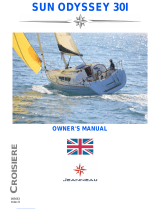 Jenneau SUN ODYSSEY 30I Owner's manual
Jenneau SUN ODYSSEY 30I Owner's manual
-
Jeanneau Sun odyssey 509 User manual
-
GFW Genoa Window Fabric Seat User manual
-
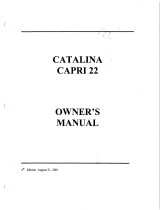 Catalina Capri 22 Owner's manual
Catalina Capri 22 Owner's manual
-
Jeanneau 53 User manual
-
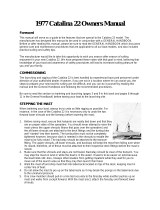 Catalina 22 1977 Owner's manual
Catalina 22 1977 Owner's manual
-
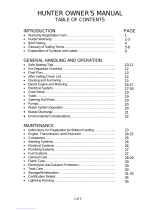 Hunter Marine H41 Owner's manual
Hunter Marine H41 Owner's manual
-
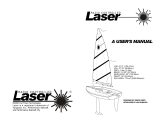 Out There LASER User manual
Out There LASER User manual
-
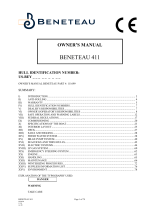 BENETEAU 2003 Oceanis 411 Owner's manual
BENETEAU 2003 Oceanis 411 Owner's manual

















































































































































